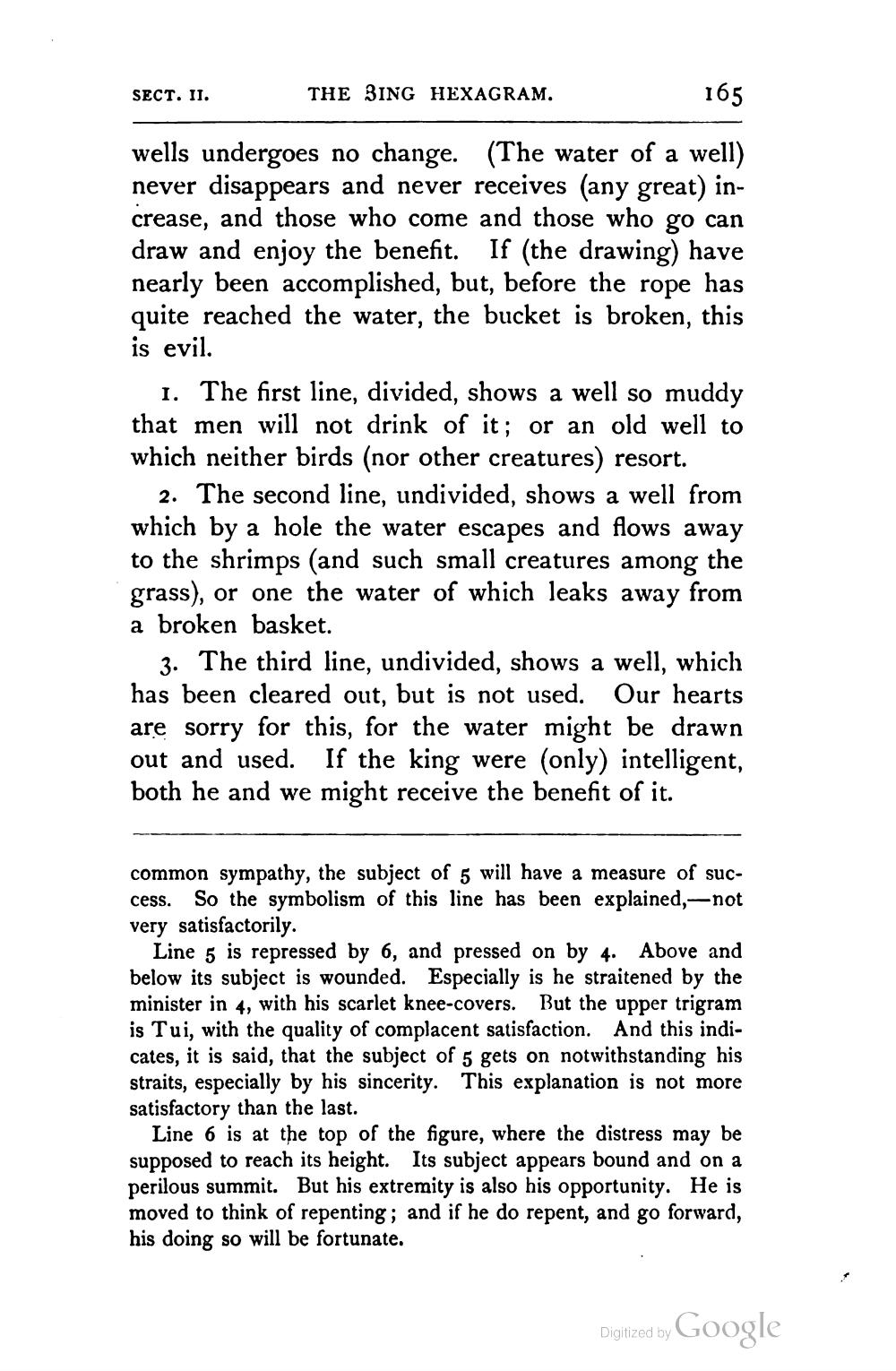________________
sect. 11.
THE BING HEXAGRAM.
165
wells undergoes no change. (The water of a well) never disappears and never receives (any great) increase, and those who come and those who go can draw and enjoy the benefit. If (the drawing) have nearly been accomplished, but, before the rope has quite reached the water, the bucket is broken, this is evil.
1. The first line, divided, shows a well so muddy that men will not drink of it; or an old well to which neither birds (nor other creatures) resort.
2. The second line, undivided, shows a well from which by a hole the water escapes and flows away to the shrimps (and such small creatures among the grass), or one the water of which leaks away from a broken basket.
3. The third line, undivided, shows a well, which has been cleared out, but is not used. Our hearts are sorry for this, for the water might be drawn out and used. If the king were (only) intelligent, both he and we might receive the benefit of it.
common sympathy, the subject of 5 will have a measure of success. So the symbolism of this line has been explained, -not very satisfactorily.
Line 5 is repressed by 6, and pressed on by 4. Above and below its subject is wounded. Especially is he straitened by the minister in 4, with his scarlet knee-covers. But the upper trigram is Tui, with the quality of complacent satisfaction. And this indicates, it is said, that the subject of 5 gets on notwithstanding his straits, especially by his sincerity. This explanation is not more satisfactory than the last.
Line 6 is at the top of the figure, where the distress may be supposed to reach its height. Its subject appears bound and on a perilous summit. But his extremity is also his opportunity. He is moved to think of repenting; and if he do repent, and go forward, his doing so will be fortunate.
Digitized by Google




